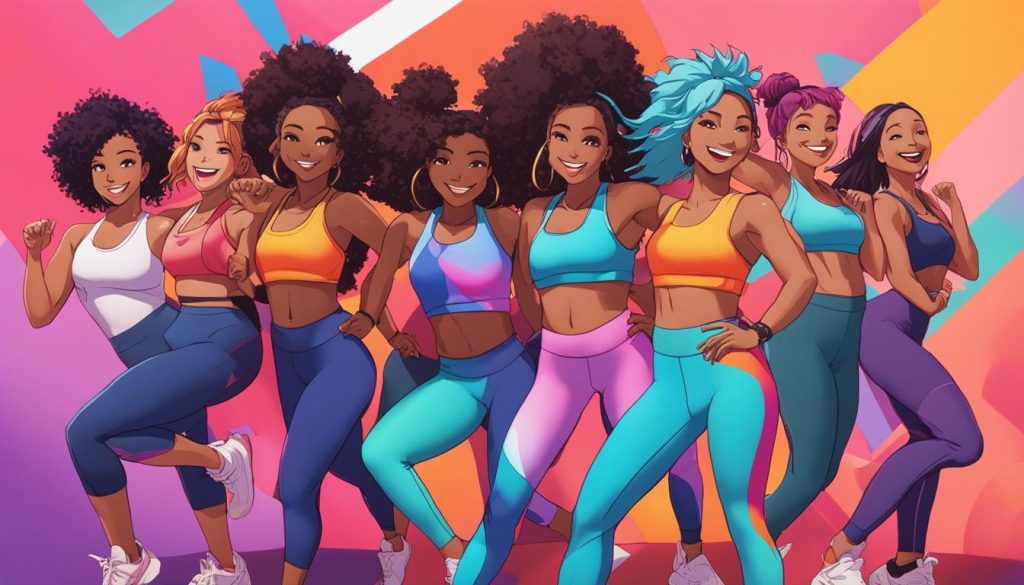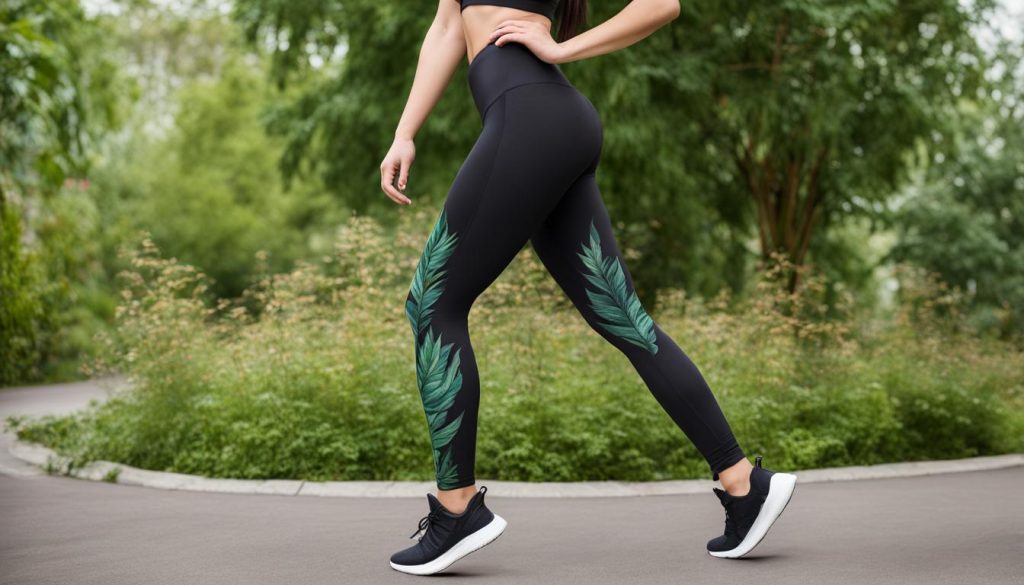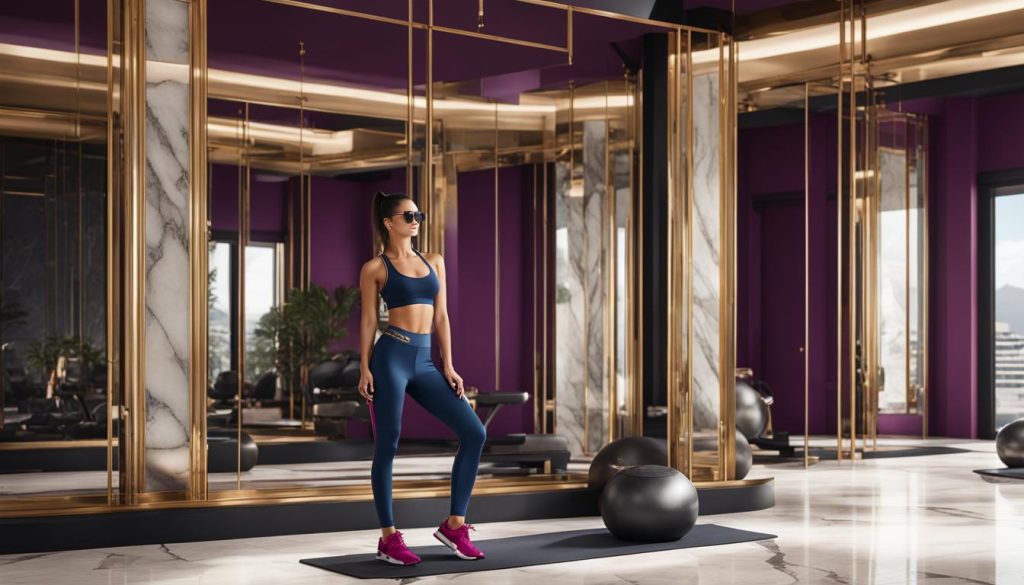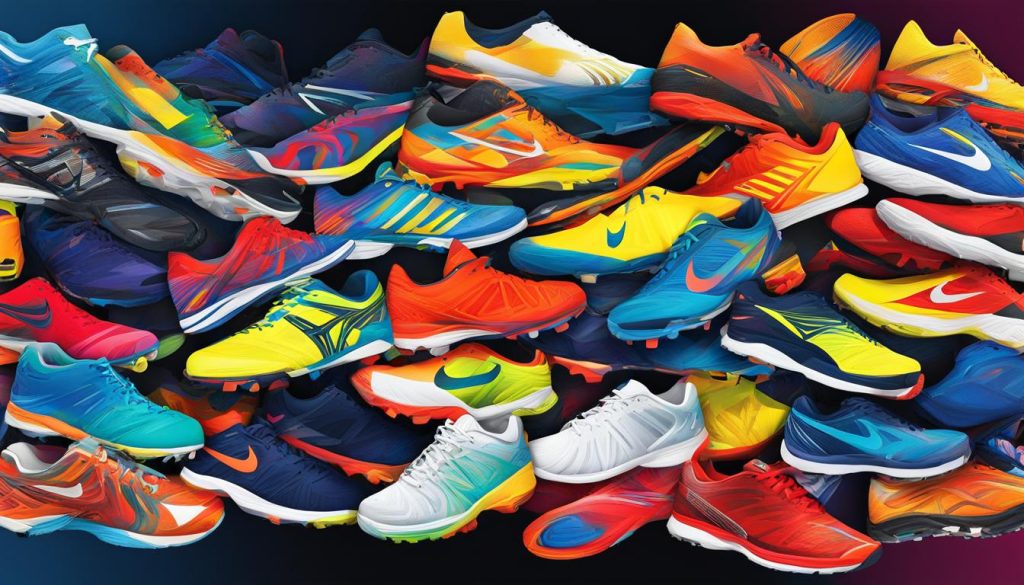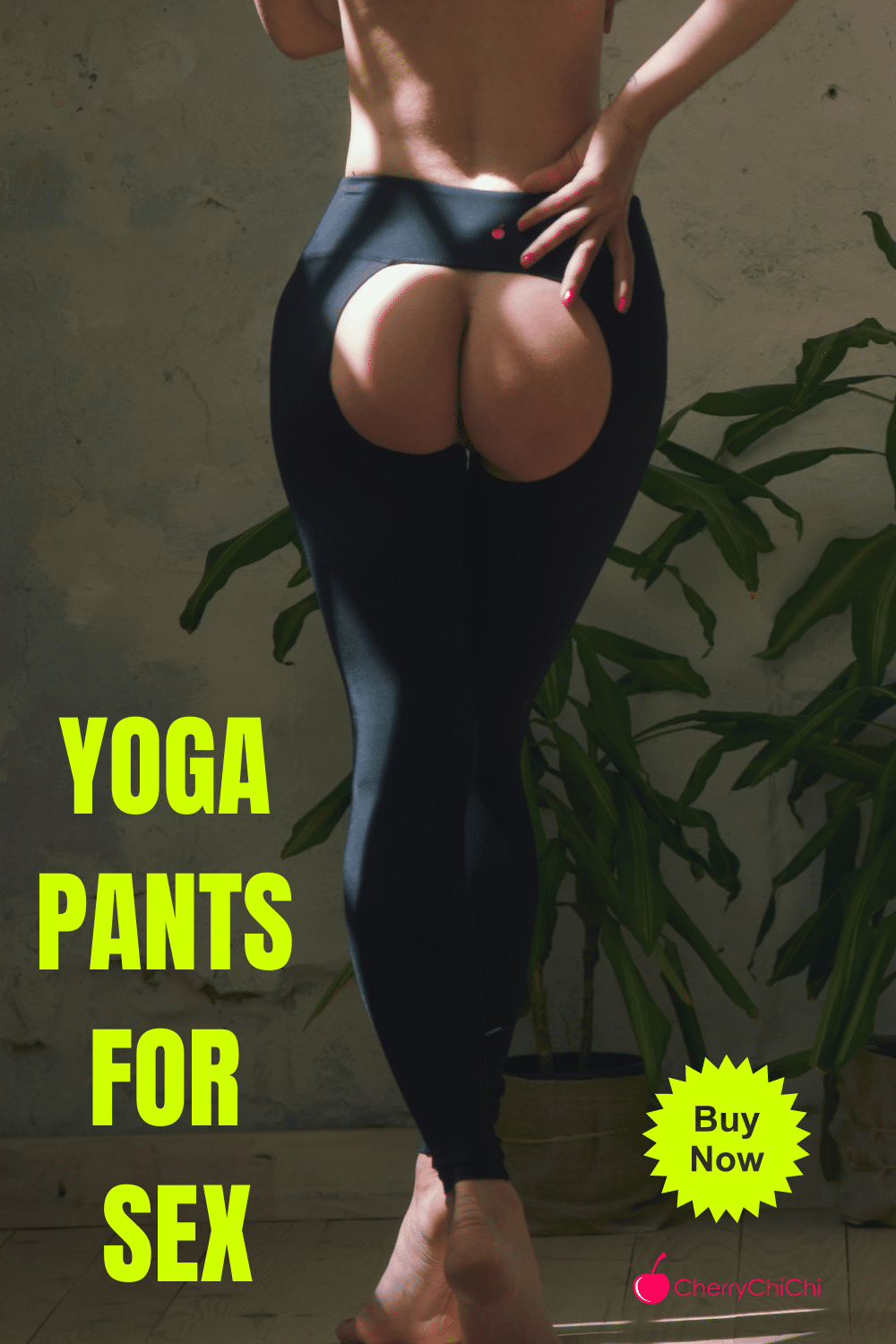
Leggings have become a staple in modern fashion, but have you ever wondered when they first gained popularity? Join me on a journey through the history and evolution of leggings to uncover the secrets behind their rise in modern culture.
From their early origins to their current status as a fashion trend, leggings have undergone quite the transformation. Let’s explore how they went from functional garments to a must-have item in every wardrobe.
Key Takeaways:
- Leggings have a rich history dating back to the 14th century, when they were primarily worn by men as protective garments.
- In the 1950s-1970s, leggings gained popularity in film and fashion, with iconic figures like Audrey Hepburn and Olivia Newton-John showcasing their style.
- The 1980s saw a resurgence of leggings in punk rock fashion, and Madonna played a significant role in popularizing them.
- In the 1990s and 2000s, leggings became a casual fashion staple, embraced by celebrities and everyday people alike.
- The 2010s marked the rise of athleisure, where leggings became a symbol of comfort and style, endorsed by influencers like Kendall Jenner.
The Early Origins of Leggings: 14th Century
Leggings have a long and fascinating history, with their origins dating back to the 14th century. The early leggings were primarily worn by men in Scotland and consisted of chainmail or leather stockings paired with boots. These leggings were functional garments that provided protection and warmth, making them essential for soldiers and hunters.
During this time, leggings were considered exclusively a men’s garment and were commonly worn underneath tunics or kilts. They served practical purposes, such as preventing chafing and offering additional support for the legs. However, as fashion evolved and the years went by, leggings would undergo significant transformations.
Leggings in the 14th century were primarily worn by men in Scotland and were made of chainmail or leather. They served as functional garments, protecting the legs and providing warmth. These early leggings were worn underneath tunics and were exclusively a men’s garment.
While the early leggings were primarily functional, their role in fashion would slowly begin to shift in the centuries to come. Stay tuned as we explore how leggings made their way into popular culture and became a staple in modern fashion.
Leggings in Film and Fashion: 1950s-1970s
During the 1950s to 1970s, leggings began to make their mark in both the film industry and the world of fashion. Iconic figures such as Audrey Hepburn, Olivia Newton-John, and Debbie Harry showcased the versatility and style of leggings, propelling them from mere athletic wear to a fashion statement.
“Leggings started gaining more visibility in popular culture during the 1950s to 1970s. Iconic figures like Audrey Hepburn, Olivia Newton-John, and Debbie Harry were seen rocking leggings in films, music performances, and fashion shoots.”
Audrey Hepburn, known for her chic and sophisticated style, famously wore leggings in the 1957 film “Funny Face,” pairing them with a turtleneck, ballet flats, and an oversized sweater. This iconic look showcased the versatility of leggings, proving that they could be both practical and fashionable.
Another notable moment for leggings in the film industry was Olivia Newton-John’s performance in the 1978 musical film “Grease.” Her character, Sandy, sported a memorable all-black ensemble that included high-waisted leggings, a leather jacket, and a fitted top. This rebellious and edgy look solidified leggings as a symbol of youth and rebellion during that era.
Debbie Harry, lead singer of the punk rock band Blondie, also played a significant role in popularizing leggings as a fashion staple. With her daring and eclectic style, she showcased how leggings could be incorporated into punk rock fashion, often pairing them with oversized sweaters, leather jackets, and boots.
Leggings in the 1980s: Punk Rock and Madonna
The 1980s marked a significant period in the history of leggings, as they experienced a resurgence in popularity, largely influenced by punk rock fashion and Madonna’s iconic style. As the punk rock movement gained momentum, leggings became a staple in the wardrobe of both musicians and their fans. Debbie Harry, the lead singer of Blondie, often rocked leggings in her performances, showcasing their rebellious and edgy appeal.
However, it was Madonna who truly played a pivotal role in popularizing leggings as a fashion statement. She embraced leggings as a versatile garment, incorporating them into her on-stage wardrobe and music videos. Madonna fearlessly layered leggings under skirts, dresses, and even wedding dresses, elevating their status from mere athletic wear to a bold and fashion-forward choice.
I think the most controversial thing I have ever done is to stick around. – Madonna
Madonna’s influence extended beyond her personal style. With her immense popularity and cultural impact, she inspired a generation of young women to embrace leggings as a symbol of empowerment and self-expression. Leggings became a way to break free from conventional fashion norms and embrace individuality, reflecting the rebellious spirit of the 1980s.
In summary, the 1980s witnessed the resurgence of leggings, fueled by the punk rock movement and Madonna’s groundbreaking fashion choices. These aspects brought leggings into the forefront of popular culture and solidified their place as a fashion statement. Leggings became more than just an item of clothing; they represented a rebellious attitude and a desire to challenge traditional fashion conventions.
| Leggings in the 1980s: Punk Rock and Madonna | ||
|---|---|---|
| Key Influences | Punk rock fashion | Madonna’s style and influence |
| Impact | Resurgence of leggings | Leggings as a fashion statement |
| Cultural Significance | Embracing individuality and rebellion | Challenging fashion norms |
Leggings in the 1990s and 2000s: Casual Comfort and Celebrity Endorsements
In the 1990s, leggings solidified their place in the fashion world as more than just activewear. They became a staple in casual fashion trends, thanks to their comfort and versatility. Celebrities played a significant role in endorsing and popularizing leggings as a fashionable item for everyday wear.
Icons like Cindy Crawford, Tiffany Thiessen, and Beyonce were frequently spotted rocking leggings, showcasing how they could be effortlessly styled with various outfits. Whether paired with oversized sweaters or mini skirts, leggings became a go-to choice for those seeking comfort without compromising style.
The trend continued to gain momentum in the 2000s, with the rise of “jeggings” – leggings designed to look like denim jeans. Celebrities like Sienna Miller, Lindsay Lohan, and the Kardashian sisters embraced this trend, further propelling leggings into the forefront of casual fashion. The popularity of jeggings demonstrated how leggings had evolved beyond their athletic origins.
| Celebrities Who Endorsed Leggings | Decade |
|---|---|
| Cindy Crawford | 1990s |
| Tiffany Thiessen | 1990s |
| Beyonce | 1990s |
| Sienna Miller | 2000s |
| Lindsay Lohan | 2000s |
| Kardashian sisters | 2000s |
“Leggings are the ultimate combination of comfort and style. They allow me to move freely while maintaining a fashionable look.” – Beyonce
Casual Fashion Trends in the 1990s and 2000s
- Oversized sweaters paired with leggings were a popular casual look in the 1990s.
- Jeggings, leggings designed to resemble jeans, gained popularity in the 2000s.
- Layering leggings under skirts or dresses became a fashion statement.
- Celebrities played a significant role in endorsing leggings as everyday fashion.
Leggings had transitioned from a niche athletic garment to a must-have fashion item in the 1990s and 2000s. The combination of comfort, versatility, and celebrity endorsements propelled leggings into the realm of casual fashion, allowing individuals to express their style while prioritizing comfort.
Leggings in the 2010s and Beyond: Athleisure and Influencer Culture
In the 2010s, leggings experienced a significant resurgence in popularity, thanks to the rise of athleisure and the influence of social media influencers. Athleisure, a fashion trend that combines athletic wear with everyday fashion, brought leggings to the forefront as a staple in both athletic and casual attire.
Influencers played a pivotal role in the growing popularity of leggings. Their endorsements and stylish outfits showcased the versatility and comfort of leggings, making them more accessible and desirable to a wider audience. Icons like Kendall Jenner and Nicki Minaj embraced leggings as fashionable items, often pairing them with oversized sweaters, crop tops, or athleisure sets. Their influential presence on social media platforms like Instagram propelled the leggings trend to new heights.
Brands specializing in athleisure wear, such as Lululemon, Gymshark, and Nike, took advantage of the leggings craze and capitalized on the demand for stylish and functional activewear. These brands created leggings with trendy designs, innovative performance fabrics, and a wide range of sizes to cater to the diverse body types of their customers. The combination of influencer endorsements and high-quality athleisure offerings fueled the popularity of leggings throughout the 2010s and beyond.
Leggings in 2021: Comfort and Sustainability
In 2021, leggings continue to be a popular trend, driven by the need for comfort and versatility in fashion. The COVID-19 pandemic has further solidified leggings’ place in our professional wardrobes, with loungewear and athleisure brands experiencing a surge in sales. Additionally, there is a growing emphasis on sustainability, with many brands offering leggings made from eco-friendly materials.
Comfort is key in the fashion world today, and leggings provide the perfect combination of style and ease. With their stretchy fabrics and elastic waistbands, leggings offer a comfortable and flattering fit for all body types. Whether worn for a casual outing or a workout session, leggings allow wearers to move freely and confidently throughout their day.
Sustainability has also become a significant consideration in the leggings industry. As consumers become more conscious of the environmental impact of fast fashion, brands are responding by offering leggings made from sustainable materials such as recycled polyester, organic cotton, and bamboo. These eco-friendly options not only reduce waste but also provide a guilt-free way to enjoy the comfort and style of leggings.
As the demand for comfort and sustainability continues to rise, leggings are evolving to meet these expectations. Brands are exploring innovative materials and manufacturing processes to create leggings that are not only comfortable and stylish, but also environmentally friendly. With their enduring popularity and commitment to improving sustainability, leggings are set to remain a wardrobe staple for years to come.
The Rise of Sustainable Leggings Brands
With sustainability becoming an integral part of the fashion industry, many brands have emerged that specialize in producing eco-friendly leggings. These brands prioritize using recycled and sustainable materials while maintaining the same level of comfort and style that leggings are known for.
- Company A: Company A focuses on creating leggings made from recycled plastic bottles, reducing waste and promoting a circular economy. Their leggings are not only sustainable but also moisture-wicking and breathable, making them perfect for both workouts and everyday wear.
- Company B: Company B sources their materials from organic cotton farms and ensures fair trade practices throughout their supply chain. Their leggings are soft, hypoallergenic, and biodegradable, making them an excellent choice for those with sensitive skin.
- Company C: Company C is committed to using innovative and sustainable fabrics such as bamboo and Tencel. Their leggings are not only eco-friendly but also offer advanced features like UV protection and antibacterial properties.
These sustainable leggings brands are gaining popularity among consumers who want to make fashion choices that align with their values. By choosing leggings from these brands, individuals can enjoy the comfort and style they desire while contributing to a more sustainable fashion industry.
The Future of Leggings: Luxury Brands and On-Demand Fitness
As leggings continue to dominate the fashion scene, the future holds exciting possibilities for this versatile garment. Luxury brands are recognizing the popularity of athleisure and are entering the market with their own performance lines. These high-end offerings combine fashion and function, appealing to consumers who seek both style and performance in their activewear. With their attention to detail and craftsmanship, luxury athleisure brands are poised to redefine the leggings landscape.
In addition to luxury brands, on-demand fitness classes have also emerged as a significant trend in the leggings industry. With the convenience of exercising from home, customers can now participate in professionally led workouts while wearing stylish leggings. This marriage of fitness and fashion provides a holistic approach to wellness, catering to the needs and desires of the modern consumer.
Furthermore, the rise of on-demand fitness classes opens up a new avenue for leggings brands to engage with their customers. By partnering with fitness platforms and influencers, these brands can create unique workout experiences and build a sense of community among their customers. This level of engagement not only fosters brand loyalty but also contributes to the overall well-being of leggings enthusiasts.
With the convergence of luxury athleisure and on-demand fitness, the future of leggings looks promising. Consumers can expect innovative designs, premium materials, and unparalleled comfort from luxury brands, while also enjoying the convenience and flexibility of on-demand fitness classes. As the demand for fashion-forward activewear continues to grow, leggings will undoubtedly remain a staple in our wardrobes, providing both style and functionality for years to come.
The Influence of Athletes: From Ronaldo to Serena Williams
Athletes have always had a significant impact on the world of fashion and trends, and the athleisure industry is no exception. Cristiano Ronaldo, one of the greatest soccer players of all time, has been a key influencer in the rise of athleisure and the popularity of leggings. With his athletic prowess and stylish image, Ronaldo has become a role model for many fans and fitness enthusiasts. His endorsement of athleisure brands has helped establish the trend as a mainstream fashion choice.
Another prominent athlete who has made a significant impact in the athleisure industry is Serena Williams. As an iconic tennis player and fashion enthusiast, Williams has not only inspired women of all ages to pursue their athletic dreams but has also become a style icon. Known for her powerful performances on the court and her bold fashion choices off the court, Williams has collaborated with various athleisure brands to create stylish and functional collections. Her influence has helped break down barriers in the industry and promote diversity and inclusivity.
With their athletic achievements and fashion-forward personas, both Ronaldo and Williams have played crucial roles in shaping the athleisure industry and its ongoing popularity. Their endorsements have added credibility and authenticity to athleisure brands, making leggings and other athletic wear items not just functional but also fashionable.
Trends and Insights from Launchmetrics Report
As the athleisure industry continues to evolve, several key trends and insights have emerged, according to a recent report by Launchmetrics. These findings shed light on the ever-changing landscape of athleisure and highlight the importance of sustainability and diversity in shaping the industry’s future.
The Rise of Sustainable Athleisure
One notable trend highlighted in the report is the growing demand for sustainable athleisure designs. As consumers become more conscious of the environmental impact of their fashion choices, brands are responding by offering high-quality leggings made from eco-friendly materials. This shift towards sustainability aligns with the broader movement towards conscious consumerism and showcases the industry’s commitment to reducing its carbon footprint.
Embracing Diversity in Athleisure
Another crucial insight from the report is the push for diversity in the athleisure industry. Brands are recognizing the importance of inclusivity and are making strides to offer a wide range of sizes and styles to cater to diverse body types. This inclusivity not only promotes body positivity but also allows consumers to find leggings that fit and flatter their unique shape. The emphasis on diversity reflects the evolving nature of the fashion industry and the desire for representation and inclusivity.
In the competitive athleisure industry, brands need to create authentic narratives that align with their values and resonate with their target audience.
Community-Building Initiatives
Furthermore, the Launchmetrics report highlights a growing trend in community-building initiatives within the athleisure market. Brands are recognizing the value of fostering a sense of belonging and connection among their customers. This includes hosting virtual fitness classes, organizing online communities, and collaborating with influencers to engage and interact with their target audience. By creating a space for customers to connect and share their experiences, brands are strengthening their relationships and building a loyal community of athleisure enthusiasts.
In conclusion, the Launchmetrics report provides valuable insights into the current state of the athleisure industry. From the rise of sustainable practices and diversity to the importance of community-building initiatives, these trends highlight the industry’s commitment to evolving with consumer demands. As athleisure continues to gain popularity, brands must continue to adapt and innovate to stay relevant in this ever-changing landscape.
Crafting Authentic Brand Narratives in the Athleisure Industry
In the competitive athleisure industry, brands face the challenge of standing out and connecting with their target audience. With an abundance of options available to consumers, it becomes crucial for brands to craft authentic brand narratives that resonate with their values and engage their customers. Authenticity in branding is a key factor that can make or break a brand’s success in the athleisure market.
Brand storytelling plays a vital role in establishing a brand’s identity and creating an emotional connection with consumers. By sharing the brand’s history, values, and mission, companies can create a sense of authenticity that sets them apart from the competition. Authentic brand narratives go beyond the product itself and focus on building relationships with customers based on shared values and experiences.
“Authenticity is not just about being real; it’s about being consistent, transparent, and genuine. It’s about showing the world who you are and what you stand for, and inviting your customers to be part of your brand story.” – John Smith, Marketing Expert
In order to engage consumers, brands should leverage the power of influencers and social media platforms. Collaborating with influencers who align with the brand’s values and target audience can help generate buzz and increase brand visibility. Additionally, using social media platforms to share user-generated content, behind-the-scenes glimpses, and stories of real customers can further enhance the brand’s authenticity and foster a sense of community.
Consumer engagement and feedback are vital for brand success
Authentic brand narratives also involve actively engaging with consumers and seeking their feedback. By listening to their needs and preferences, brands can adapt and improve their products and services. This two-way communication builds trust and loyalty, and consumers feel valued when their opinions are taken into consideration. Brands should actively encourage customer feedback through surveys, social media polls, and interactive campaigns to foster a sense of belonging and collaboration.
In conclusion, crafting authentic brand narratives is essential for brands to thrive in the competitive athleisure industry. By sharing compelling stories that align with their values, leveraging the power of influencers and social media platforms, and actively engaging with consumers, brands can establish a genuine connection with their audience. In a market driven by individuality and personal expression, authenticity in branding is a key differentiator that can help brands build a loyal following and achieve long-term success.
Conclusion
In conclusion, the history and evolution of leggings have been fascinating, showcasing how they have transitioned from functional garments to fashion statements. From their early origins in the 14th century as men’s wear in Scotland to their rise in popular culture through film and fashion in the 1950s-1970s, leggings have continuously evolved. Icons like Audrey Hepburn, Olivia Newton-John, and Madonna played significant roles in elevating leggings to the status of a style statement.
The 1990s and 2000s saw leggings being embraced by celebrities like Cindy Crawford, Beyonce, and the Kardashian sisters, solidifying their place as versatile and comfortable fashion staples. In the 2010s, leggings became a core component of the athleisure trend, with influencers like Kendall Jenner and Nicki Minaj endorsing their fashion-forward appeal.
In 2021, leggings remain popular due to their comfort and versatility, further fueled by the need for adaptable clothing during the COVID-19 pandemic. Sustainability has become an important focus, with many brands offering leggings made from eco-friendly materials. Looking ahead, the future of leggings holds promise, with luxury brands entering the athleisure market and on-demand fitness classes gaining popularity.
Leggings have truly become a timeless fashion choice, influenced by celebrities, athletes, and societal shifts. With their ability to offer style, comfort, and flexibility, it’s no wonder why leggings continue to dominate the fashion scene. As consumer demands evolve, brands must adapt and innovate to stay relevant in this ever-growing industry.
FAQ
When did leggings become popular in modern culture?
Leggings started gaining more visibility in popular culture during the 1950s to 1970s. Iconic figures like Audrey Hepburn, Olivia Newton-John, and Debbie Harry were seen rocking leggings in films, music performances, and fashion shoots.
Who played a significant role in popularizing leggings in the 1980s?
Debbie Harry, lead singer of Blondie, and Madonna played significant roles in popularizing leggings as a fashion statement in the 1980s. Madonna incorporated leggings into her on-stage wardrobe, layering them under skirts, dresses, and even wedding dresses.
Which celebrities embraced leggings as versatile attire in the 1990s and 2000s?
Celebrities like Cindy Crawford, Tiffany Thiessen, and Beyonce embraced leggings as versatile and comfortable attire in the 1990s and 2000s.
What is the trend in leggings in 2021?
In 2021, leggings continue to be a popular trend, driven by the need for comfort and versatility in fashion. The COVID-19 pandemic has further solidified leggings’ place in our professional wardrobes, with loungewear and athleisure brands experiencing a surge in sales.
What is the future of leggings?
The future of leggings holds the potential for further expansion and innovation. Luxury brands have started entering the athleisure market, incorporating performance lines into their collections. On-demand fitness classes offered by athleisure brands have also become increasingly popular, providing customers with the convenience of exercising at home while wearing stylish leggings.
What are some trends and insights in the athleisure industry?
According to the Launchmetrics report, the athleisure industry is experiencing a growing demand for sustainable and inclusive designs. Brands are focusing on creating high-quality, environmentally-friendly leggings and offering a wide range of sizes to cater to diverse body types. On-demand fitness classes and community-building initiatives are also becoming prominent in the athleisure market.
How can brands craft authentic narratives in the athleisure industry?
In the competitive athleisure industry, brands need to create authentic narratives that align with their values and resonate with their target audience. By engaging in socio-political issues and leveraging the power of influencers and social media platforms, brands can cultivate brand loyalty and establish long-term relationships with consumers.




